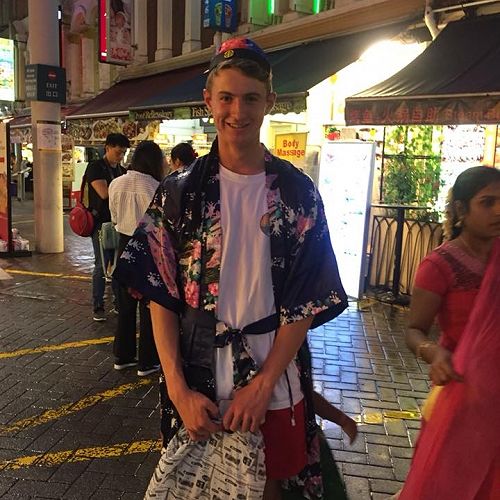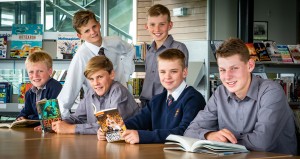32 students, 12 parents, and 4 teachers took a two-week adventure around Singapore, Cambodia and Vietnam to immerse ourselves in the history, the culture, and get to know the people.

Singapore is an island the size of Lake Taupo, but with 5.6 million people living on it. It was the perfect place to start our journey, allowing us to acclimatise to Southeast Asia without the culture shock that we would inevitably face once we reached Cambodia and Vietnam. The Singapore Zoo and Flyer were a highlight for many of us. The zoo allowed us to walk among free-ranging animals, and the Flyer showed us the beautiful city from above. The parents enjoyed the skywalk in the Singapore Gardens and a trip to the top of the Marina Bay Sands Hotel. Those people who bought ponchos were pleased, while not overly fashionable because when it rains in Singapore, it rains suddenly and furiously.
Cambodia was where we really began to engage with the history of Southeast Asia. Under the control of the brutal Khmer Rouge from 1975 to 1979, the country still bears the scars of its past very visibly. We were privileged to be able to visit the Killing Fields in Phnom Penh and pay our respects to the victims of the regime. The history from this time is not censored and is very confronting; the memorial to the victims is full of their bones which bear the marks of machetes and other weapons. We also paid our respects at Tuol Sleng, or S21, where ‘enemies’ of the Khmer Rouge were imprisoned, tortured and killed. Photographs and remnants of the building’s time as a prison remain for visitors to see. It was a difficult place to visit, and none of us will forget the faces of the victims commemorated in multiple photo boards. Being able to visit these places, and talk to people who live and work there, changes our understanding and challenges some of the perceptions we held. Some of the group hold an infamous Cambodian buffet lunch as the culprit behind the tummy bugs that stayed with us throughout the remainder of our trip.
Rather than flying into Vietnam from Cambodia, we travelled by bus over the border down the Mekong Delta. The bus ride was an experience in culture itself as we saw van after van, with people piled on top. They sat, or lay, or ate, or smoked, on top of the vans, with no restraint, at relatively high speeds. Our passports nervously in hand, we waited in queues to get them stamped, and our luggage checked over. Once it was over, it seemed a bit haphazard - some of the border guards were sleeping or checking their phones as our luggage was scanned. We arrived in Ho Chi Minh City, amongst a flood of mopeds, to meet our Vietnamese guide, Viet. We were incredibly lucky to be in his hands throughout our time in Vietnam, and he was very hard to say goodbye to. Incredibly knowledgeable about the history of his country, extremely kind, and keen to get to know our students, Viet was one of the best parts of the trip for many of the students.
Ho Chi Minh City, or Saigon as it is still known to many, is in the south and is the largest city in Vietnam. During our time there we visited the War Remnants Museum, which is dedicated to memorialising different aspects of the Vietnam War, or American War of Aggression as it is known in Vietnam. Viet gave us a guided tour of the Reunification Palace, where North Vietnamese tanks rolled in to reunite the country in 1975. To satisfy our tourist fancies, we also spent time at the Ben Thanh Market and a local cooking school.
Hue, the former imperial city in the central region of Vietnam, saw us visit local pagodas, Buddhist temples, take a dragon boat down the Perfume River, and visit the Emperor’s Tomb. Hoi An was a favourite destination for many of the group members. A former trading post, the coastal city, has areas cut off from traffic and lit by lanterns at night. It is a beautiful city and was a slight reprieve from the relentless nature of our trip. We had a rest day in Hoi An, allowing the students to get suits made for the upcoming formal, buy gifts for people at home, and catch up on a bit of much-needed sleep. We also travelled inland to the hamlet of My Lai, where American soldiers from Charlie Company massacred a village of elderly men, women and children in 1968. A museum has been built on the site and remains of the homes have been rebuilt to show us what it must have been like in 1968; this was very moving. We finished our time in Vietnam in Hanoi, the capital. We started with a walking tour to get our bearings around the Old Quarter, and then explored our surroundings. While in Hanoi, we visited the Ethnology Museum, dedicated to the different peoples and cultures which make up Vietnam. The Hoa Lo Prison, or ‘Hanoi Hilton’, was home to Vietnamese prisoners under the French, and later to American prisoners under the North Vietnamese. It is an intimidating building surrounded by high walls with broken glass embedded on the tops. While there, we overheard an American former POW who had returned to Vietnam. We finished with a farewell meal and speeches back at our hotel, where the students did an impressive haka for Viet, and a few tears were shed.
We had a superb group of students, parents and teachers. The young men who came with us were responsible, respectful, engaged, and a pleasure to travel with. Special thanks must go to Ms Melissa Bell, travelling to Vietnam for her seventh time. The trip was as organised, enjoyable, and purposeful, due to her tireless efforts and hours of work. David Smith, our awesome and experienced travel agent, also worked exceptionally hard to meet our requests and ensure our trip was as fabulous as it was. Thanks must also go to a fabulous group of twelve parents who were enthusiastic, helpful, and thoroughly good company throughout the trip.
Our trip was incredible and we all have memories to keep - stolen birthday cakes in Cambodia, a small bowl of teeth at the Killing Fields, a cyclo tour through a winding flower market, the palms in the wind at My Lai, bargaining in the markets trying to mentally convert Vietnamese dong into New Zealand dollars, Hoi An at dusk, weaving through the crowded streets in Hanoi hoping you’re heading in the right direction.



















































































 Open Event Registration - Interested in enrolling?
Open Event Registration - Interested in enrolling? Employment opportunities - click if you're interested in working at McGlashan.
Employment opportunities - click if you're interested in working at McGlashan.